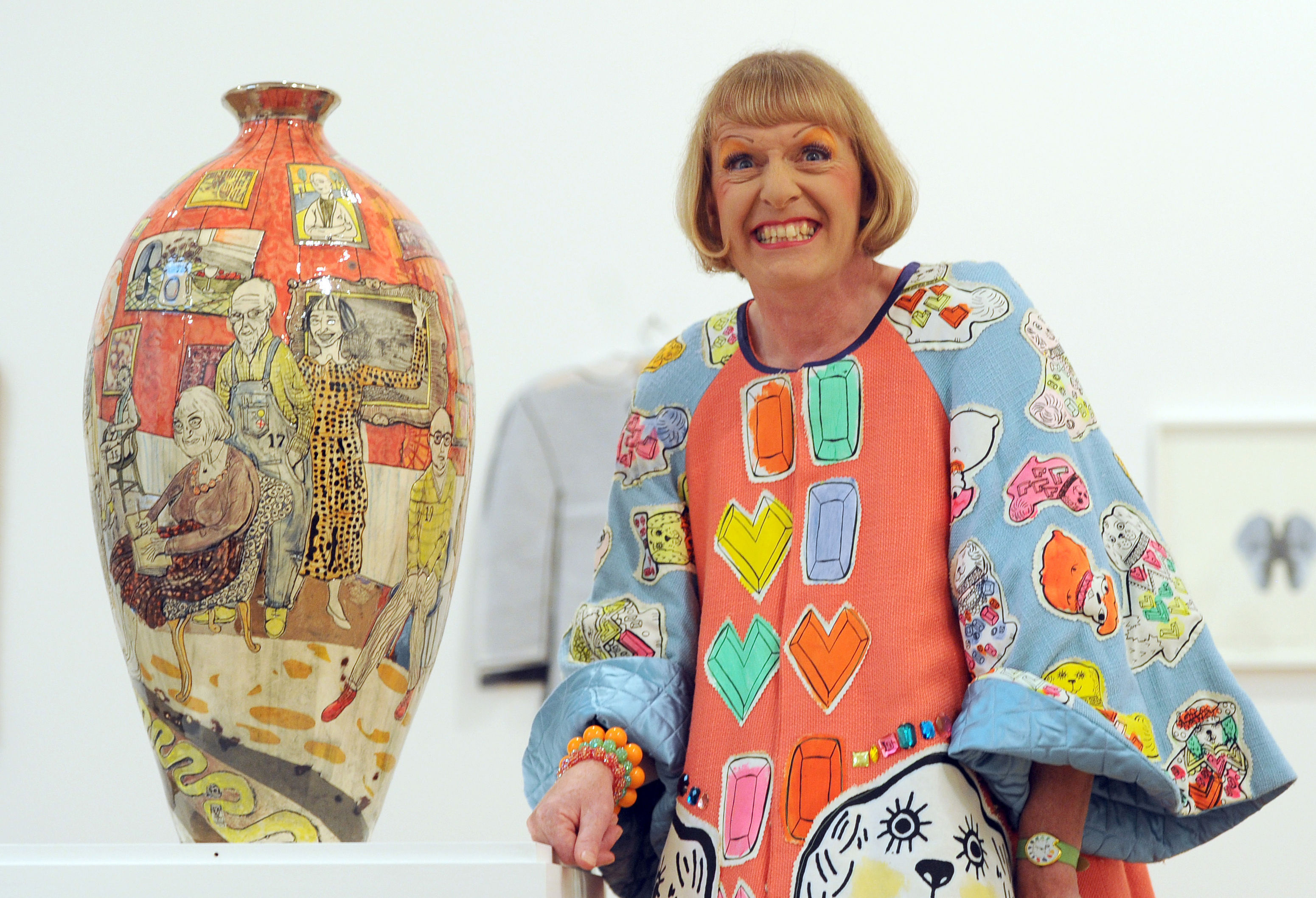Inventing the Aesthetics of Trans-Femininity
by Miriam L. Mason | July 25, 2024

At some point during my first semester of college, I found myself naked in another girl’s room. I was a newly out trans fem trying on her old clothes, desperate for anything feminine to wear. The third or fourth time this happened (call me a heartbreaker), I picked up a slip of fabric with a Zara label and asked, “what are you going to do with the clothes I don’t take?” “Oh, I’ll just throw them out. I don’t have room for them anyways.” Her answer shifted my relationship to her clothes in a disturbing manner. I had come filled with expectancy, dreaming of fulfilling my desire to finally dress the way that I wanted. Instead, I was looking through the clothes she felt were too out-of-fashion, too worn, too poorly fitting to wear anymore. Her intentions were good, but she ended up teaching me a harsh lesson about transmisogyny. The seeds of my femininity, the first things that made me feel like myself, were the rejects of previous owners. Like a meal that doesn’t agree with your stomach, the clothes of these girls spewed forth into neat piles on their beds—some skirts near the foot, a dress or two by the head—for me to pick through. I could not refuse their refuse. In order for my trans-femininity to flourish, I needed to create my own aesthetic; one that used the odds and ends of the binary to move beyond, into a style of my own.
Taking those clothes as the foundation for my new wardrobe made me realise that normative femininity was far from accessible. These girls could never give me the clothes I desired. Who would give the pieces that you found super cute to someone you’d practically just met? They would only give me the clothes that needed to be taken out of their possession, so that everything could fit in their tiny college closets. So, I couldn’t quite transform into the vision of myself I had dreamed of overnight. I had neither the means nor the know-how to dress like “her”, no matter how hard I wanted to. The best I could do was to combine the clothes from the donation pile in as creative and meaningful ways as possible.
I wanted to see the clothes that this girl gave to me as an opportunity for experimentation, rather than just a disappointment. I wanted to get inventive with them. I might have left the skirts that were so tight they only really showed off my girl bulge. Or the dresses that were somehow too tight for my shoulders and too loose for my hips. That wasn’t all she had to offer, though. I got from her a shirt that’s a little tight around the shoulders, but so cute underneath a flannel or a coat. A sweater not quite my colour, but beggars can’t be choosers. All of this I took from her, and I wear most of it years later. Each piece required some form of modification. To find a way forward, I had to identify the clothes that were almost what I wanted, and find a way to make them distinctly “mine”. I could not access the femininity of the girl who gave me her clothes, but I could create a femininity of my own.
The experience of having to creatively repurpose and recontextualize these clothes made me interested in other kinds of creativity with fabric. When I brought the clothes of these other girls back to my room, I would toss them on top of my dresser next to my own donation pile: old undershirts, plain white t-shirts that I could wear under a button-down, because I didn’t quite know what to do with them anymore. After experimenting for so long with pre-made clothes, I decided I wanted to use these old shirts to learn how to make my own. I used these leftovers of my masculinity to figure out exactly how I wanted my clothes to fit, how I wanted them to fall on my shoulders, to arrange themselves on my waist, what I wanted them to hide and to show. I started to make my own aesthetic, something that was neither normatively masculine nor feminine, but beyond.
Despite all of this, I still have fewer clothing options than anyone around me. Nowadays, the only pile of fabric in my room is my laundry. I mostly make my own clothes or get them from the odd clothing swap or thrift store, if I’m feeling adventurous. Each piece I have is something that I adore, something that makes me feel at home in my body. The problem is, both now and then, those pieces are hard to come by. If I add more than one or two pieces to my collection in a semester, it’s because I’ve been skipping class to sew. I have about 10 outfits now. Enough to mix it up, but not too much. The weight of transmisogyny lets me breathe only lightly. Any deeper is to remind myself of everything denied to me.
To be transfeminine is to be fluent in invention. It is to learn how to cut and to sew, to print and draw, to layer and reveal, in ways brand new. It is to move beyond the rigidity of a binary that suffocates, into a space that becomes a catalyst for creation. I feel the tension between myself and the aesthetics that have been available to me. I use my frustration with them to make a new aesthetic that’s not quite unrelated but not quite reducible to either pole. I rummage through the scraps of the gender binary in search of the golden things it is yet to devour. After all, one man’s trash is another girl’s treasure. ∎
Words by Miriam L. Mason. Art by Philip Kerr.




